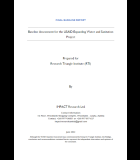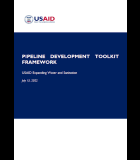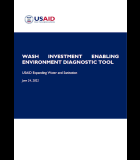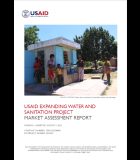Schools Promoting Learning Advancement through Sanitation & Hygiene (SPLASH)
SPLASH’s overall objective was to improve learning outcomes among students in the 495 schools reached by the program. However, since funding came from the “Paul Simon Water for The Poor Act” earmark, SPLASH was also expected to respond to the key goals of the earmark namely to improve access to water and sanitation and promote improved hygiene practices. Thus, the SPLASH objective was stated as: “To sustainably improve access to safe water, adequate sanitation, hygiene information & health practices to improve learning environments & educational performance in Zambian primary schools.”
Activity Description
The SPLASH project was organized into five task areas that addressed the key components required for sustainability: access to hardware, software, and an enabling environment
1. Install and rehabilitate improved drinking water supply, sanitation, and hygiene infrastructure in schools, using a service delivery framework
2. Improve the hygiene behaviors and health of learners and teachers—and subsequently their communities—through the use of innovative and participatory approaches
3. Strengthen local governance and coordination of WASH in Schools through the involvement of multiple stakeholders
4. Engage those who set policies at the national, provincial, and district levels to support WASH in Schools through more effective and efficient policies and practices
5. Strengthen the capacity of small-scale service providers and the private sector to deliver WASH goods and services to both schools and communities on a sustainable basis.
SPLASH also addressed these cross-cutting issues: Gender equity and inclusion, Strategic partnering, Monitoring and evaluation, Knowledge management (KM), and Environmental sustainability
Expected Outcomes
• Improved drinking water and sanitation facilities rehabilitated and installed in schools using services delivery framework
• Improved hygiene behaviors of learners and teachers through the use of innovative and participatory methods
• Strengthened local governance and coordination of WASH in schools through multiple stakeholder involvement
• Effective policies and practices supported at national, provincial, and district levels to support WASH in schools
• Increased capacity of small-scale service providers and private sector to deliver WASH goods and services to both schools and communities
Actual Outcomes
• 259,253 people in target areas gained access to improved drinking water supply as a result of U.S. government (USG) assistance through SPLASH
• Drilled and equipped 120 new boreholes with India Mark II Force Lift pumps with elevated 2,500 liter tanks
• Rehabilitated 303 water points to meet MLGH standards and installed 284 drinking water stations near classrooms in 312 schools
• 161,463 people in target areas gained access to improved sanitation facilities as a result of USG assistance
• Provision of 386 girls’ washrooms has enhanced MHM and is attracting more girls to schools.
• 662 handwashing facilities constructed at 499 schools
• SLTS contributed to 133 schools attaining WASH-Friendly status as of the end of August, 2015.





